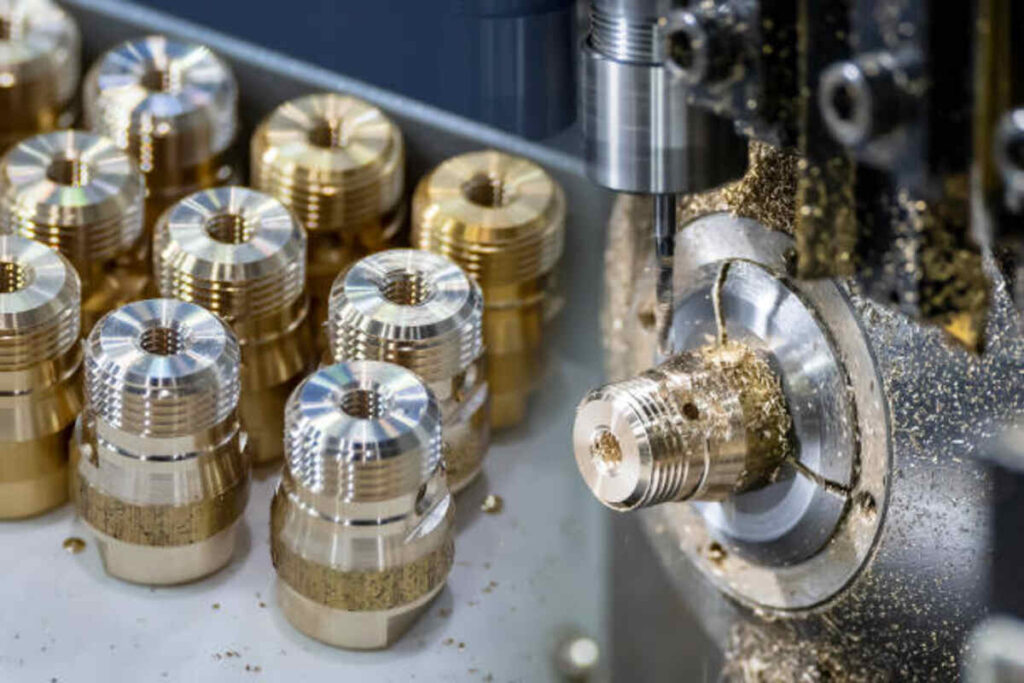Unraveling the Basics
CNC (Computer Numerical Control) Swiss machining is a sophisticated manufacturing process that specializes in producing small, complex parts with extreme precision. Originating from Switzerland, this method was initially developed to cater to the watchmaking industry, which demanded high precision for its intricate components. Today, CNC Swiss machining extends its reach beyond watches, impacting a myriad of industries that require precise and intricate part manufacturing. The best guide to finding CNC Swiss machining services.
The Swiss Legacy in Modern Machining
The Swiss origins of this technology are not just historical footnotes; they define the quality and precision that CNC Swiss machining guarantees. The watchmaking industry set a high standard for precision, demanding components that function flawlessly in compact spaces. Modern CNC Swiss machining continues to uphold these standards, applying them to various fields from medical to aerospace industries, ensuring that each part manufactured meets exact specifications.
Precision Meets Innovation
At the heart of CNC Swiss machining is a blend of precision and innovation. The integration of advanced computer programming with mechanical precision allows the creation of parts with tight tolerances. This innovation ensures that even the most complex designs are transformed into tangible components with unmatched accuracy. As industries evolve, so does the technology, continually pushing the boundaries of what is possible in precision engineering.
Why Choose CNC Swiss Machining Services?
Precision at Its Finest
When creating parts that fit perfectly, precision is the cornerstone. CNC Swiss machining offers unparalleled accuracy, allowing for the achievement of tight tolerances that are often difficult with other machining methods. In fields where precision is non-negotiable, such as medical and aerospace, the accuracy of CNC Swiss machining ensures that each part functions as intended, much like a finely crafted narrative that captivates its audience.
Complex Parts Made Easy
One of the standout features of CNC Swiss machining is its remarkable capability to handle complex geometries. This is akin to unraveling a convoluted plot twist in a novel; without the right approach, it can become a tangled mess. CNC Swiss machines excel at crafting intricate parts that might otherwise be tricky to produce, serving as a master storyteller for your engineering projects by ensuring every piece fits perfectly within the larger narrative.
Efficiency and Speed
In the fast-paced world of engineering, time is often a critical factor. CNC Swiss machining not only offers precision but also delivers efficiency. These machines operate at high speeds, producing parts with remarkable consistency. This efficiency is crucial for projects racing against deadlines, offering a steady supply of components without sacrificing quality, similar to a seasoned writer meeting tight publication deadlines without compromising on content quality.
Versatility Across Industries
From automotive to electronics, CNC Swiss machining finds its place in a multitude of industries. Just as a content marketer adapts their writing style to suit different audiences, these machines work with a range of materials, including metals and plastics. This versatility makes CNC Swiss machining a valuable tool for manufacturers across various sectors, enabling them to meet diverse production needs with the same precision and reliability.
The CNC Machining Parts Process
Step 1: Design and Programming
It all begins with a design—a detailed blueprint of the desired component. This is akin to crafting a story outline for an aspiring novelist. The next step involves programming the CNC machine, inputting the design specifications into the machine’s computer system to ensure every detail is accounted for. This meticulous planning phase is crucial, as it sets the foundation for the entire machining process, much like a well-structured plot sets the stage for a compelling narrative.
Step 2: Setting Up the Machine
Setting up the CNC machine is analogous to preparing the stage for a compelling presentation. This involves selecting the appropriate tools and materials to ensure that the machining process runs smoothly and produces the desired results. Proper setup is essential to prevent errors and ensure that the machine operates at optimal efficiency, much like a carefully rehearsed presentation that captivates its audience without a hitch.
Step 3: Machining and Monitoring
Once the setup is complete, the machining process begins. The CNC Swiss machine follows the programmed instructions, crafting the part with precision and accuracy. Throughout this process, operators closely monitor the machine to ensure everything runs smoothly. This vigilance is similar to keeping an eye on plot development, ensuring that the story remains coherent and engaging, with no unexpected twists derailing the narrative.
Step 4: Quality Control
Before the part is considered complete, it undergoes rigorous quality control checks. This step ensures that the final product meets the specified tolerances and quality standards. It’s akin to proofreading a manuscript to catch any errors before publishing. Quality control is the final safeguard, ensuring that each part functions as intended and maintains the high standards expected from CNC Swiss machining.
Practical Applications of CNC Swiss Machining
Medical Devices
In the medical field, precision is paramount, and CNC Swiss machining plays a vital role in manufacturing components for medical devices. From surgical instruments to implants, the accuracy of these parts can significantly impact patient outcomes. The responsibility of creating precise medical components mirrors the importance of crafting a compelling narrative, where every element must be meticulously aligned to ensure the story’s success.
Aerospace Components
In the aerospace industry, precision engineering is non-negotiable. CNC Swiss machining is utilized to create components that withstand extreme conditions while maintaining top-notch performance. Just as a graduate student needs to structure their arguments effectively, aerospace engineers rely on CNC machining to build reliable and efficient parts that meet the rigorous demands of the industry.
Electronics and Beyond
From connectors to intricate components, the electronics industry benefits immensely from CNC Swiss machining. The ability to produce small, detailed parts aligns perfectly with the complexities of modern electronic devices. This precision parallels the meticulous attention to detail required in crafting engaging content, where every element must seamlessly integrate to resonate with the target audience.
Conclusion
In the world of precision engineering, CNC Swiss machining stands out as a reliable and efficient solution for crafting intricate parts. Whether you’re an aspiring novelist, a content marketer, or a graduate student, the principles of precision and attention to detail are universal.
CNC Swiss machining services offer the tools you need to bring your projects to life with accuracy and finesse. So, the next time you’re faced with a complex engineering challenge, remember that precision is within reach, just like crafting the perfect story or creating engaging content.
With CNC Swiss machining, your projects can achieve the same level of excellence that captivates readers and engages audiences—a true testament to the power of precision engineering solutions.


